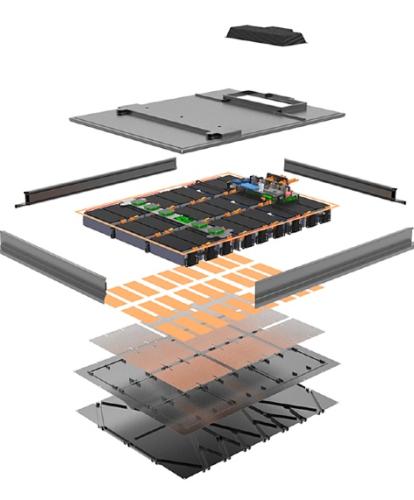Engineering specialist IAV has developed a battery concept that is said to be significantly easier to recycle than existing battery systems and to have a considerably better CO2 balance.
According to the developer, batteries constructed using the IAV method can be dismantled with significantly less effort, allowing the materials they contain to be reused. Over the entire life cycle of a battery, up to 20% of CO2 emissions could be saved with this method, according to averaging from IAV, an engineering company in the automotive sector that designs products for powertrain, electronics and vehicle development.
The core element is a new battery housing and module concept. Instead of aluminium, IAV relies on steel, which can be “separated in the recycling process more easily and with less energy than aluminium”. IAV puts the additional weight at only 1% to 1.5% due to the consistent lightweight construction.
The second major innovation is in the joining and connection technologies.
“Hundreds of screws end up being used for the entire battery system, plus a lot of glueing and welding,” said Michael Clauß, specialist for battery development at IAV. However, conventional production processes and the materials used make it difficult to dismantle the batteries and recycle them correctly. “That’s why many batteries are shredded. Valuable materials and carrier elements that could be used in new batteries are thus lost.”
Instead of multiple screw solutions, glueing, and welding seams, IAV engineers have introduced new joining techniques. Wherever possible, click and plug connections are used. This means that the number of screw connections can be reduced by two thirds, and glueing and welding can also be significantly reduced.
IAV isn’t the only company to turn its attention to battery recycling. In March, the Renault Group announced it would collaborate in a recycling cooperation with recycling specialist Veolia and chemical group Solvay. The three companies are working together on the development of a circular economy for metals from the used batteries of electric vehicles.
Volvo, too, announced in April that it wants to save 2.5 million tonnes of CO2 and one billion Swedish kronor (about £85 million) per year from 2025 onwards by setting up recycling loops to process, repair and reuse emission-intensive materials in car production.
In IAV’s case, “Thanks to the new design, recyclers can disassemble the battery system more easily and quickly,” said Clauß. “The design is such that robots can take over large parts of the work.” Disassembling different battery types, in particular, is an important factor in recycling – and thus also crucial for economic efficiency.
The concept is interesting for future electric vehicles and can also be integrated into existing electric models.
According to Clauß, a battery adapted according to the concept could have the same dimensions and connections as before, “so it could be integrated into existing vehicle structures without any problems”. However, the new inner workings of the battery would simplify recycling. IAV has not mentioned possible effects on the energy density and cooling concepts.



